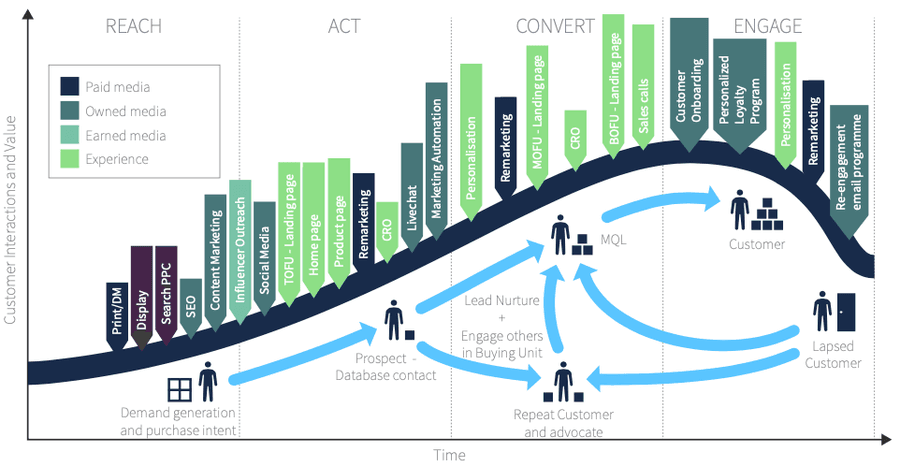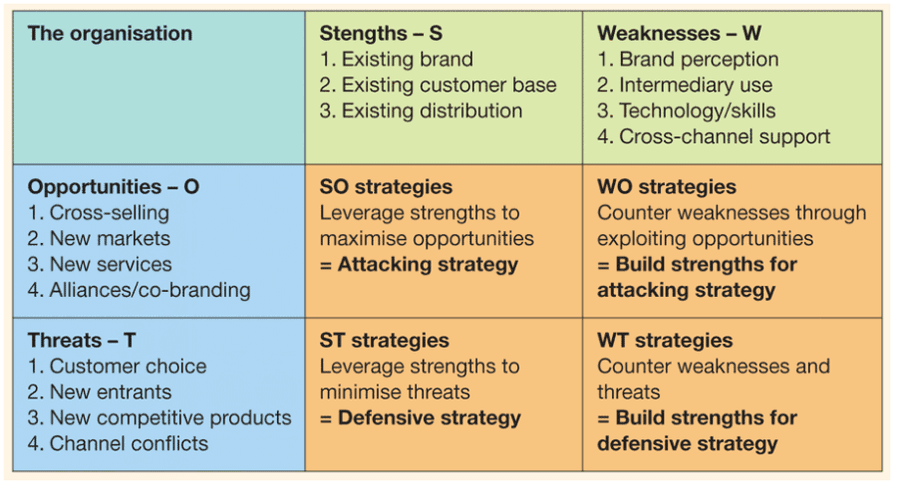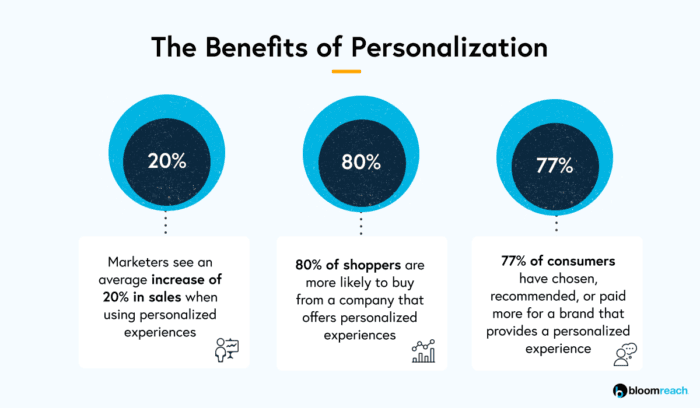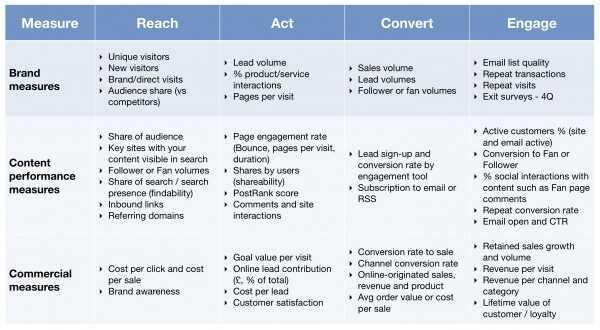How to write an e-commerce marketing plan | Smart Insights
Curated from: smartinsights.com
Ideas, facts & insights covering these topics:
11 ideas
·2.83K reads
37
1
Explore the World's Best Ideas
Join today and uncover 100+ curated journeys from 50+ topics. Unlock access to our mobile app with extensive features.
Defining An E-commerce Marketing Plan
E-commerce marketing planning is about formalizing how you intend to drive traffic to a website and convert it from prospective users to customers.
The plan specifies exactly how a business intends to use e-commerce marketing channels to attract, convert and retain customers. With an integrated plan aligned to the business vision and consistent with an omnichannel approach, a business can expect to see accelerated results.
Nearly half of companies don't have a clearly defined digital marketing strategy. Of those who do, the majority have integrated it into their overall marketing strategy.
86
409 reads
The RACE Framework
The RACE Framework is the perfect tool to assist the e-commerce marketing planning stage, allowing you to focus on each stage: plan, reach, act, convert, and engage. The model divides the customer journey into clear phases, demonstrating appropriate marketing activities playing a different role in each stage.
100
438 reads
The Five-Step E-commerce Marketing Plan
Plan: Create a digital marketing strategy, mission and objectives
Reach: Grow your audience online, situational analysis and competitive landscape, target audience, budget and goals
Act: Encourage brand interactions and leads, media and channels
Convert: Increase online and offline sales through optimization, KPIs and success metrics
Engage: Build customer loyalty and advocacy
96
405 reads
Step 1: Assess Current Situation (PLAN)
Begin your plan by assessing the previous year’s performance. To create an effective digital marketing strategy, you must first have a good idea of what is working as a strength as well as knowing your weaknesses.
You should also have a view of the market and your competitors’ activities.
- Identify all of your current digital marketing activities.
- Work out your strengths, weaknesses, opportunities and threats using the SWOT/ TOWS frameworks.
- Outline your e-commerce marketing goals and make sure you’ve set SMART objectives.
- Understand your target market, their needs, wants and expectations.
93
269 reads
Step 2: Grow Your Audience (REACH)
What is the growth timeline and how do you intend to reach new customers?
Reach involves building awareness of your brand, products, and services. After all, no one can buy from your business if they don’t know it exists.
ToFu (top-of-funnel) tactics as part of your e-commerce marketing plan should focus on how you can use other websites and offline media to drive traffic to your owned media e.g. website, blog, or social media profiles.
90
229 reads
Maximize Reach Of Marketing
- Define your key brand messages to focus on awareness, familiarity and purchase intent.
- Embed campaign tracking and attribution to adequately review performance.
- Perform keyword research to identify strengths and opportunities (both paid and organic search)
- Identify the appropriate channels to promote the right content to the right people.
- Define a paid and display media budget to reach the correct audience.
90
237 reads
Step 3: Prompt Interactions, Subscribers and Leads (ACT)
What channels and content works best to grab attention with the target audience? What makes them take action?
The ACT stage in the e-commerce marketing plan is aimed at encouraging interactions that will result in lead generation. It focuses on creating interactions with content rather than conversion at this point in the funnel. MoFu (middle-of-funnel) marketing works to position the company as the best provider to suit the customer's needs.
Plan the next year’s activities with appropriate budgets and KPIs specifically aimed at the middle of the funnel.
88
154 reads
Step 4: Focus On Conversion (CONVERT)
How do you intend to convert a lead to a sale? What activities will persuade your audience to take that vital next step and turn into paying customers? BoFu (bottom-of-funnel) looks at the end of the process; generating the conversion.
Today’s customers expect a personalized digital experience. This might be dynamic landing pages, multichannel marketing offering a range of conversion techniques such as email, LiveChat, and product demos, and fully optimized mobile browsing.
88
174 reads
Points To Keep In Mind For The Omnichannel Marketing Strategy
It’s important to remember that payment can be made through online e-commerce transactions or offline channels. The customer journey is not linear and a deep dive into analytics and customer data is essential to understanding the path to purchase. You should consider this as part of your omnichannel marketing strategy.
Identify conversion funnels and paths to purchase.
Plan how you can personalize the digital experience within your current constraints and resources.
Establish a communication process between your marketing and development teams.
87
140 reads
Step 5: Keep It Going (ENGAGE)
This stage in the funnel requires you to keep adding value to your brand experience to generate repeat purchases, build loyalty, and improve customer satisfaction.
- Plan how you can use content to nurture the post-sale relationship. Examples include storytelling, case studies and engaging social content.
- Outline your intended onboarding process using e-commerce marketing techniques and online messaging.
- Establish your multi-channel customer service process e.g. chatbots, social media, call centres.
- Identify post-sale customer data for remarketing opportunities that will build relationships
87
142 reads
Measuring the Effectiveness of your e-commerce marketing plan
Your e-commerce marketing plan should include a view as to how you will track and report on all KPIs:
- Customized Google Analytics goals, segments, events and dimensions to reflect campaigns
- A conversion-based forecast model for media ROI
- The conversion rate for different types of leads or subscribers
- A method of assessing the quality of visitors to your website
- Attribution across all digital channels, but also how they influence offline sales
- How to track returning customers and their value
- Email subscriber engagement
- Customer satisfaction and loyalty drivers
89
238 reads
IDEAS CURATED BY
CURATOR'S NOTE
Thinking about your e-commerce marketing plan for 2022? Use the RACE Framework to create a focussed and well-structured digital marketing strategy.
“
Charlotte Hampton's ideas are part of this journey:
Learn more about business with this collection
How to create a successful onboarding process
Why onboarding is crucial for customer retention
How to measure the success of onboarding
Related collections
Similar ideas
Read & Learn
20x Faster
without
deepstash
with
deepstash
with
deepstash
Personalized microlearning
—
100+ Learning Journeys
—
Access to 200,000+ ideas
—
Access to the mobile app
—
Unlimited idea saving
—
—
Unlimited history
—
—
Unlimited listening to ideas
—
—
Downloading & offline access
—
—
Supercharge your mind with one idea per day
Enter your email and spend 1 minute every day to learn something new.
I agree to receive email updates





